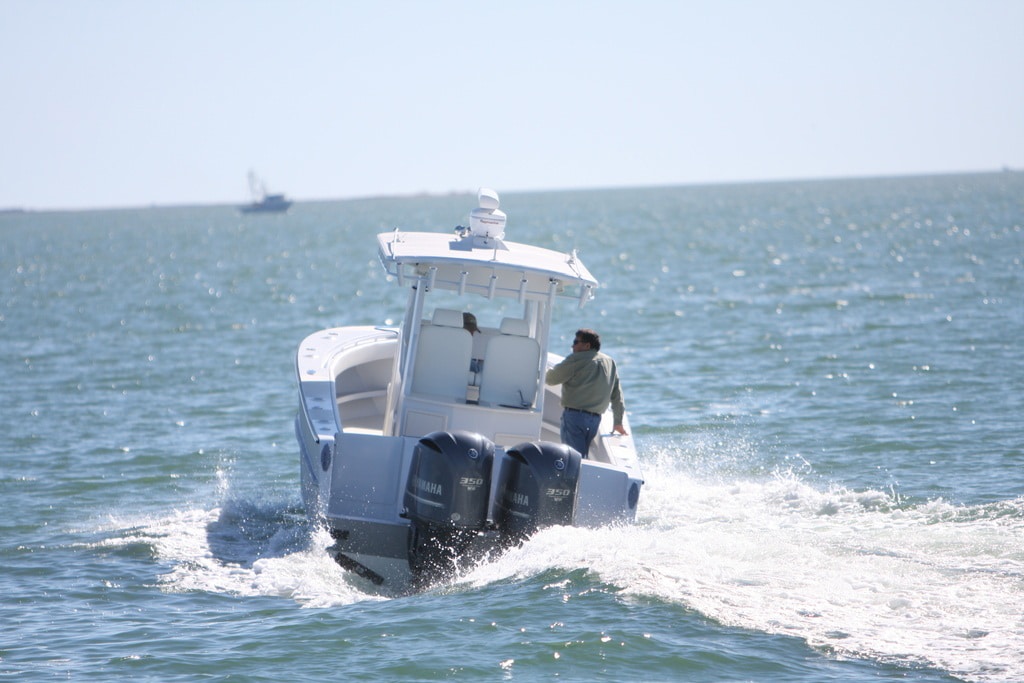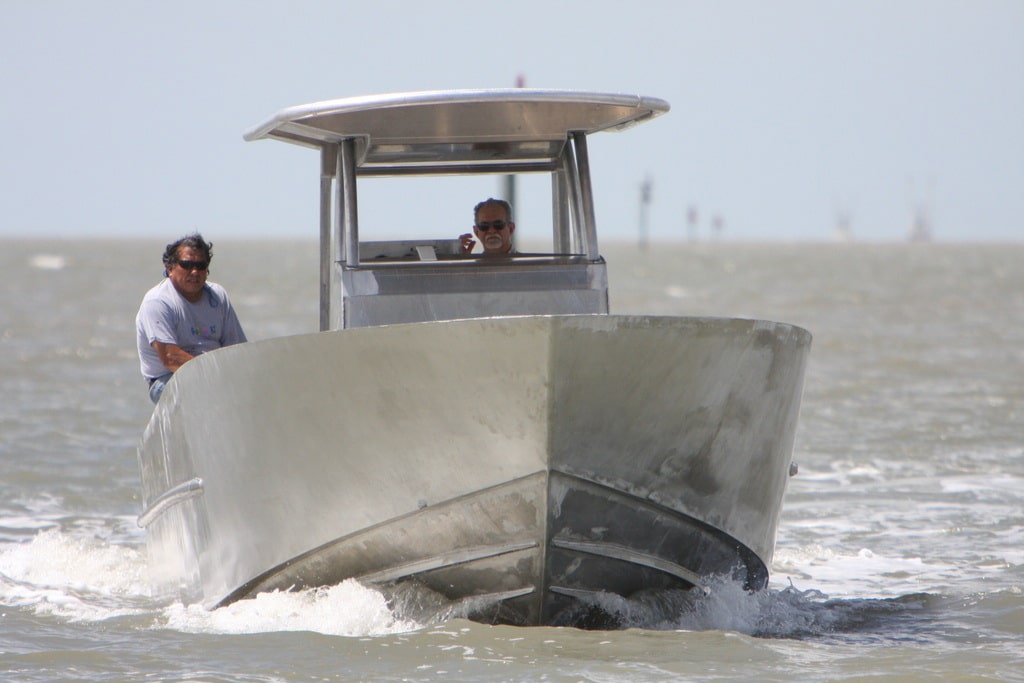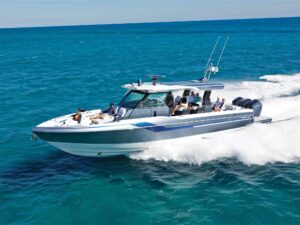Comparing deadrise angles is a common measure of how soft a boat will ride. Put another way, more deadrise generally equals the ability to run at faster speeds before pounding becomes excessive. But it’s not the only characteristic that defines how well a boat mushes through chop. Let’s define deadrise on a boat, and then look at some other attributes that contribute to a smooth riding boat. Hopefully, you’ll find the discussion beneficial in making a short list of prospective models for sea trial at the upcoming boat shows.
What is Deadrise on a Boat?
Deadrise is the angle formed between horizontal and the hull at any given point. While transom deadrise is the most often cited value, a boat’s hull has boat deadrise along its entire length. A flat-bottom garvey has zero deadrise, and a deep-V race boat may have a deadrise angle of 50 degrees at its stem and more than 20 degrees at its transom.
However, since most planing powerboats run on the after third of their hulls at cruising speeds, transom deadrise is the most common basis for comparison. But it doesn’t tell the whole story. I’ve tested more than 600 boats during my tenure at Boating magazine and can tell you that there are boats with less transom deadrise that run softer than their counterparts with more deadrise.

It’s almost self-evident that more deadrise aft — a sharper hull — is going to ride softer. I say “almost” because other elements come into play. One of these is the width of the chine. If a boat has wide chines, it’s likely to slap more in a chop than another boat with equivalent deadrise and narrower chines. Then there’s the angle of the chines. Some are “flat,” that is, they protrude horizontally from the V of the hull panels. This is in contrast to reversed chines, which angle out from the hull at a downward angle. Again, all things being equal, of two boats with the same width chines, the one with reversed chines will likely be able to maintain a higher speed before pounding.
Another element to consider is beam. A wider boat may start to pound sooner (at slower speeds) than a narrower boat, even if both have the same transom deadrise angle. Basic physics at work here — more surface area landing on the water means the boat can’t sink in as much, and so it comes to a more abrupt stop after cresting a wave.
Then there are the section lines. To understand what sections are, think of slicing the hull athwartships, as you would slice a loaf of bread. It’s the line described from keel to chine.
For most planing power craft, sections are either flat (straight line from keel to chine) or convex (slightly bowed outwards from keel to chine). Generally speaking, a little convexity is a good thing. It allows a boat to decelerate more slowly after dropping off a wave into the water. Boats with flat sections penetrate the surface more quickly, sink in faster and deeper, then fetch-up more abruptly.

Finally, consider the helm position. Of two similar boats with equivalent deadrise, the boat with the helm located farther aft is going to be more comfortable to run in chop — at least from the helm position. It’s no secret that the farther aft you move on any boat, the gentler the ride feels. While this doesn’t speak to how softly the boat itself is riding — you’d need to hook up accelerometers to determine that — it provides an indication of the relative comfort you will experience in any given set of conditions.
Now, moving the helm aft shrinks the aft cockpit. Narrowing the chines may create an uncomfortable roll while off plane. Having convex hull sections may make a boat wetter. Beamier boats provide more room for amenities. I qualify all of these things by way of getting back to my original point. You can’t look at any one hull feature, deadrise included, in isolation and declare it “best riding.” It’s the balance of these characteristics, and others, measured by your intended use of the boat and the conditions you generally expect to be boating in.
There is no perfect boat. There’s probably one that’s perfect for you. Hit the shows, make a short list, and then schedule sea trials. Armed with the points discussed here, along with a clear idea of your goal for the boat and knowledge of the waters you expect to be boating in, you should be able to make more confident decisions.








